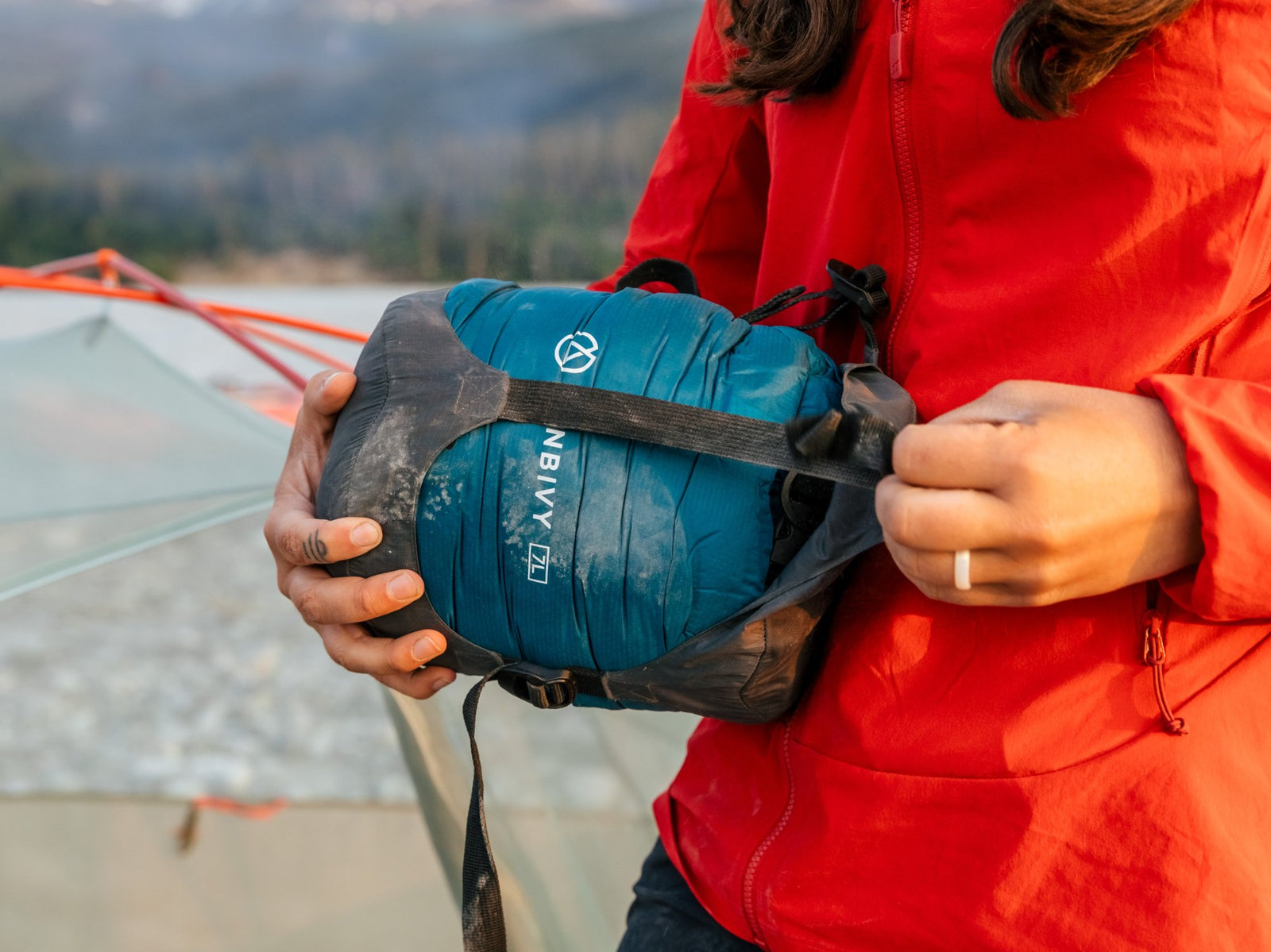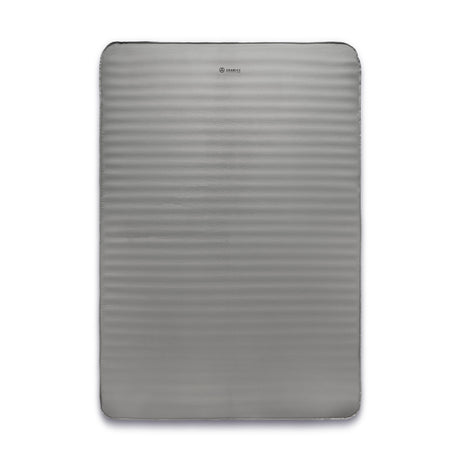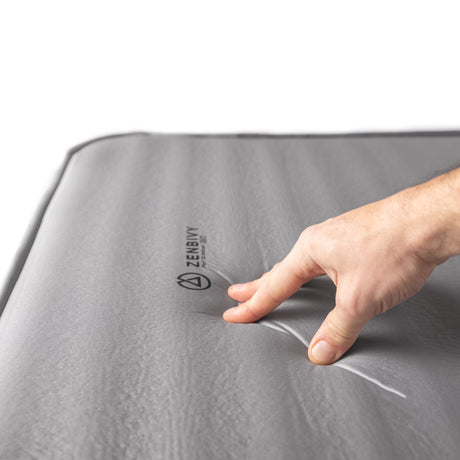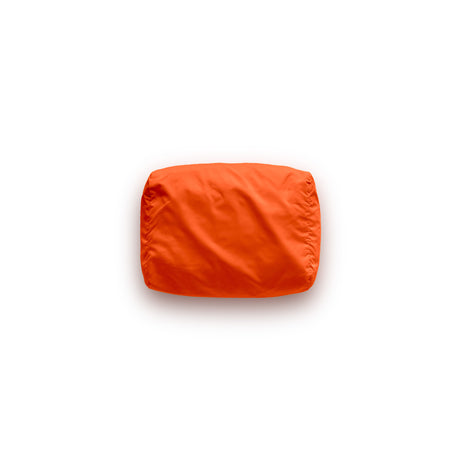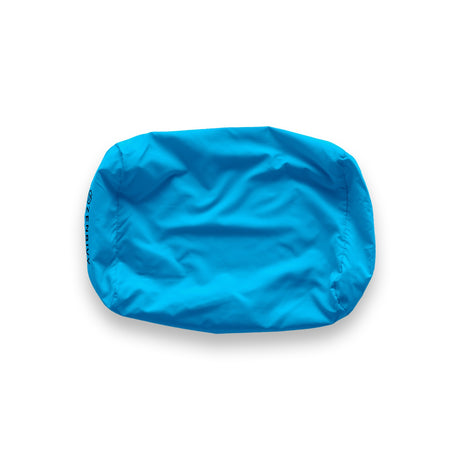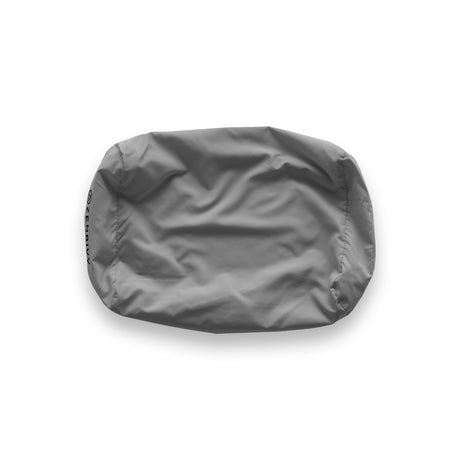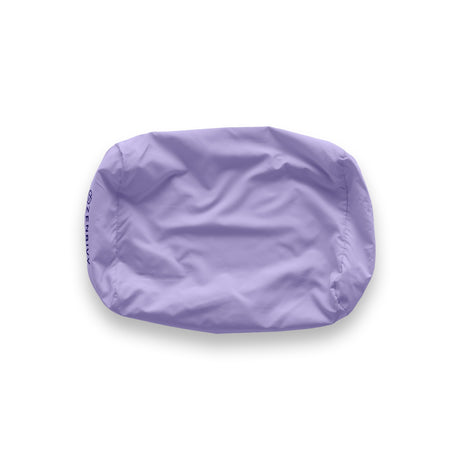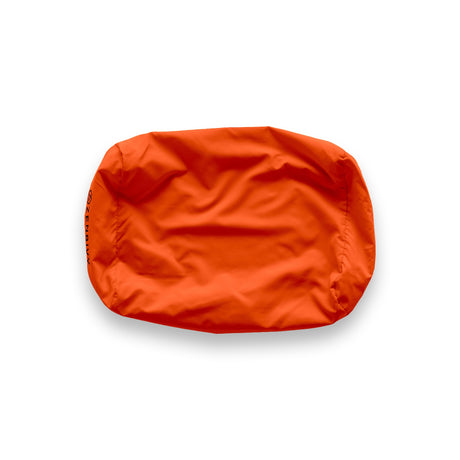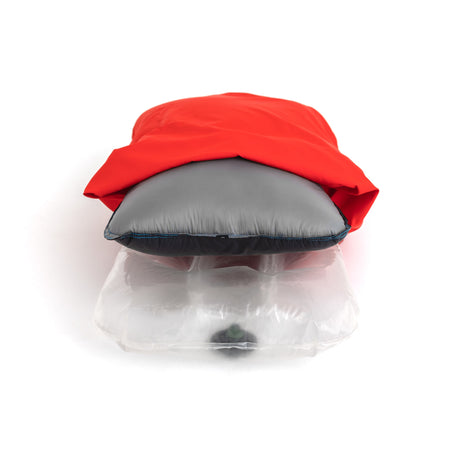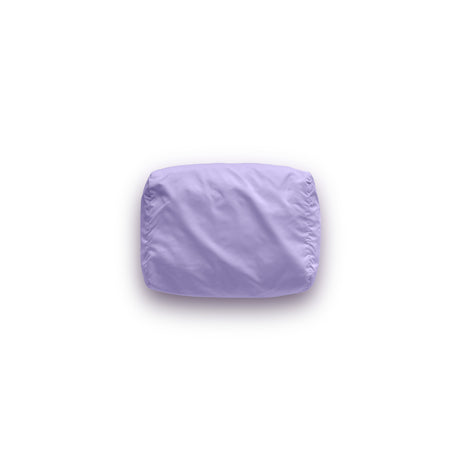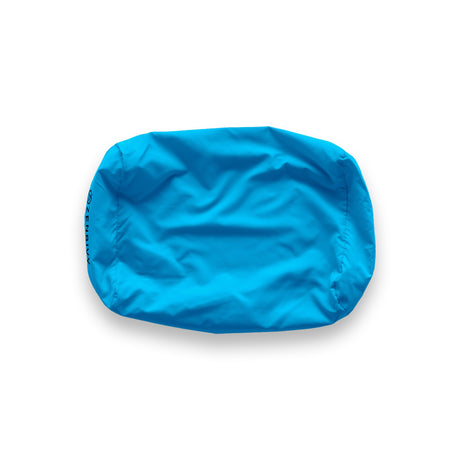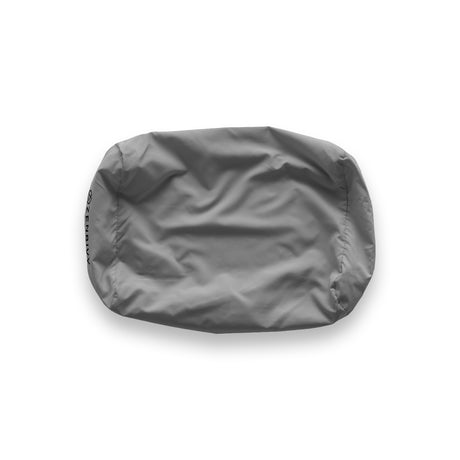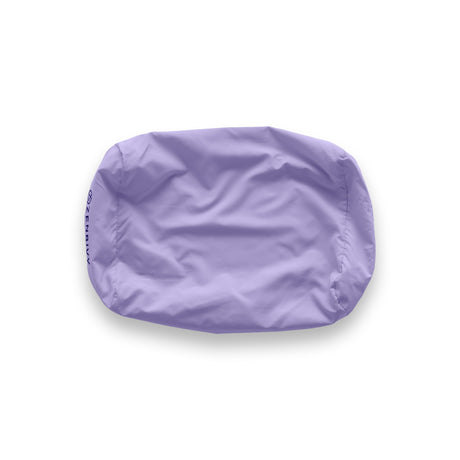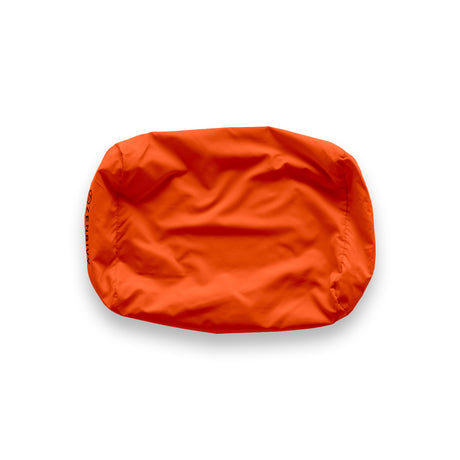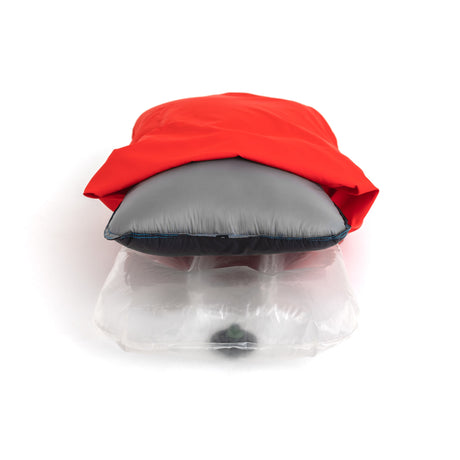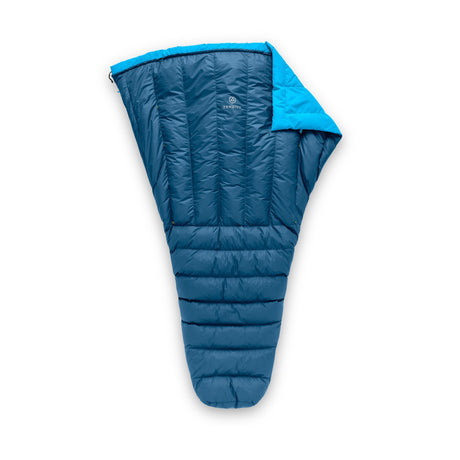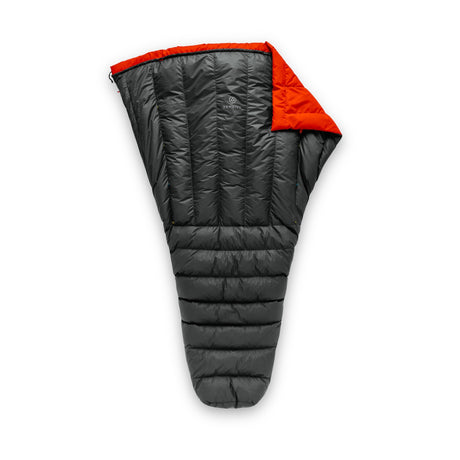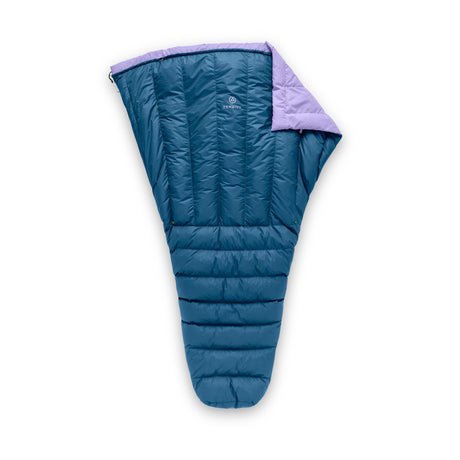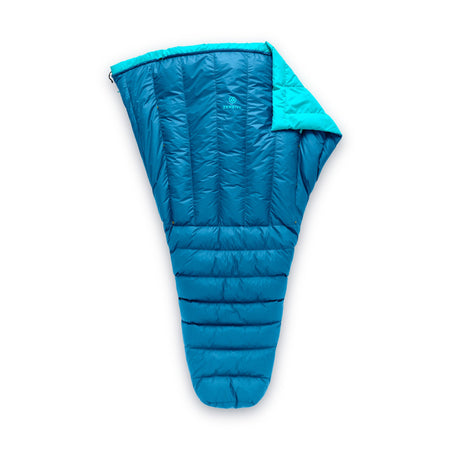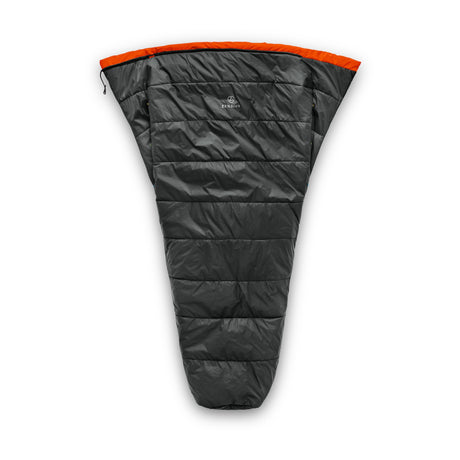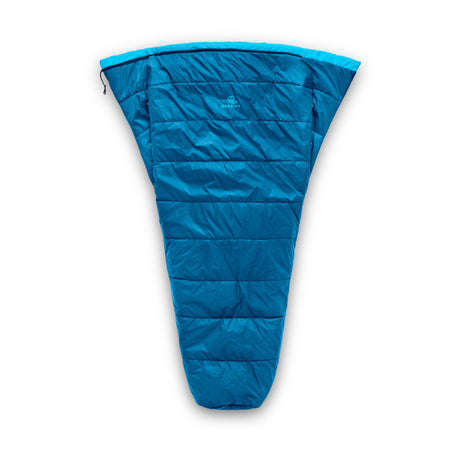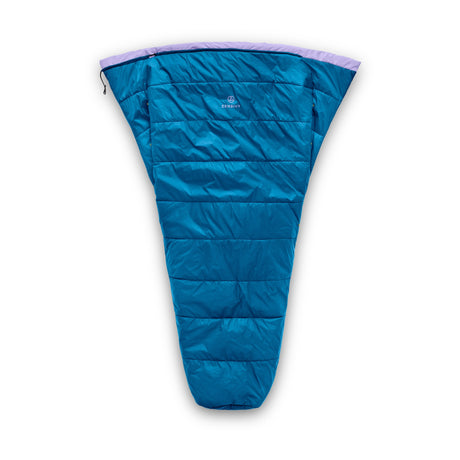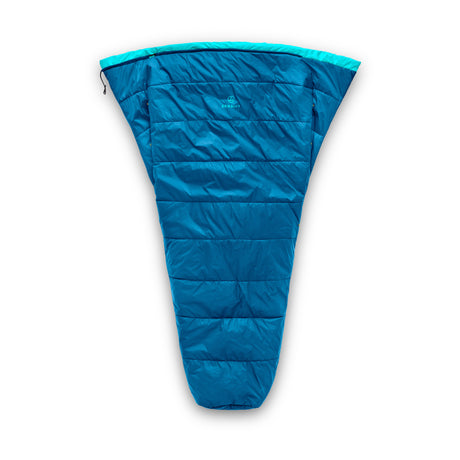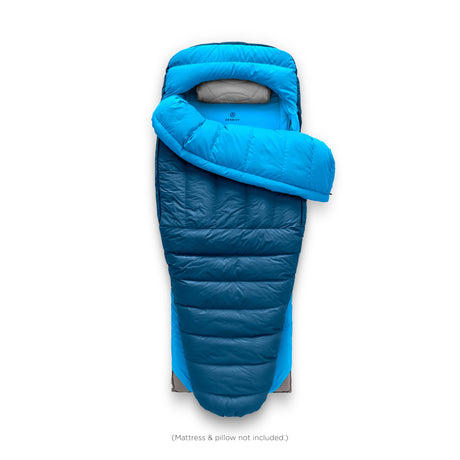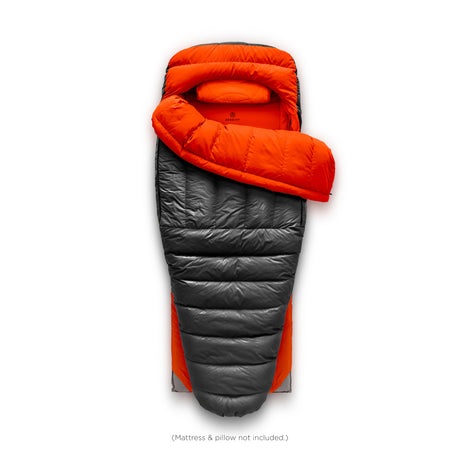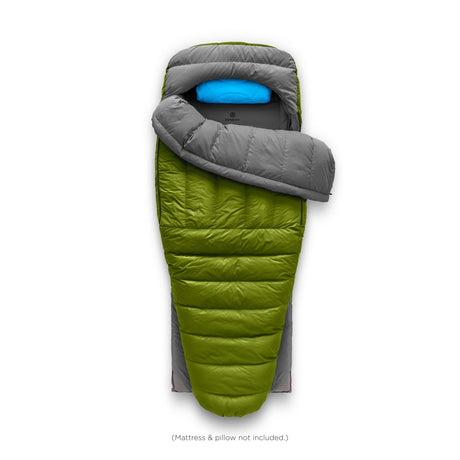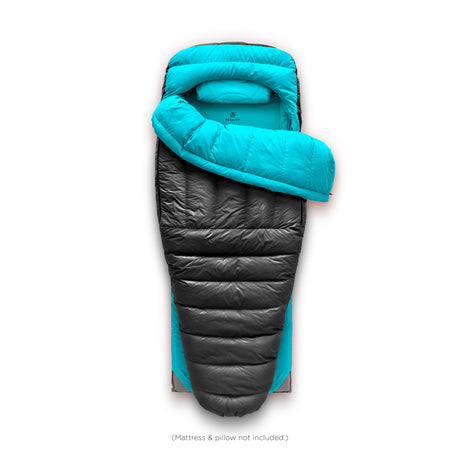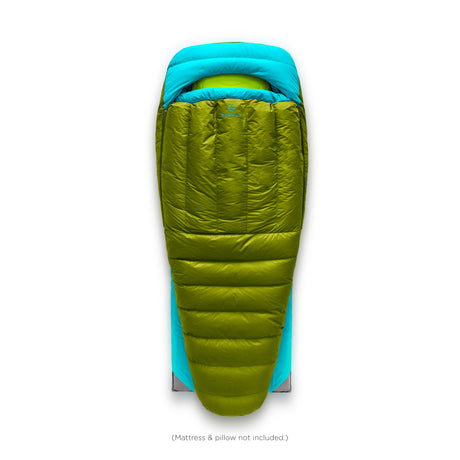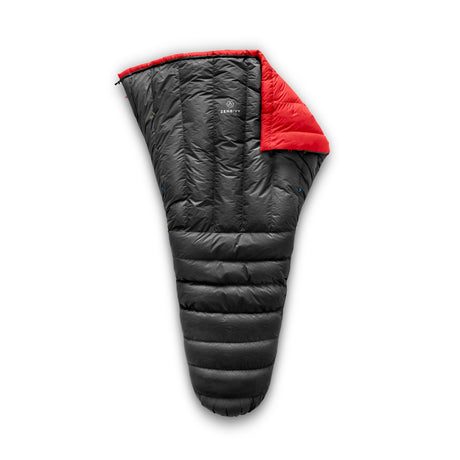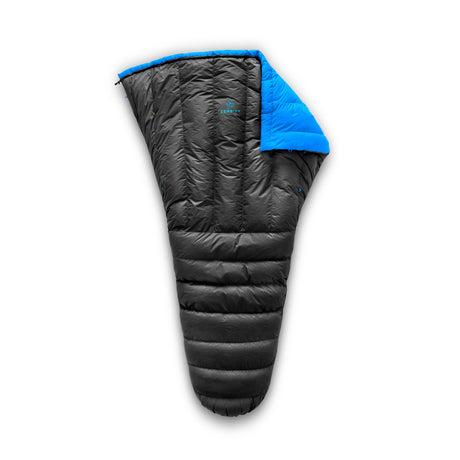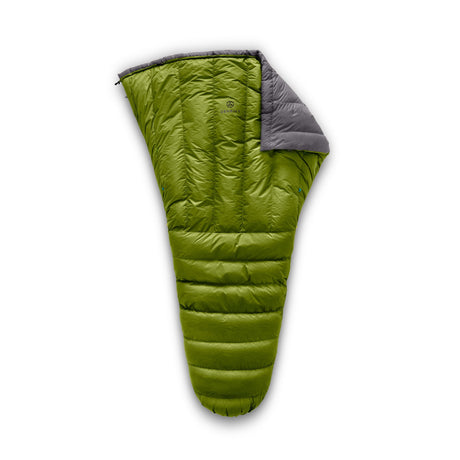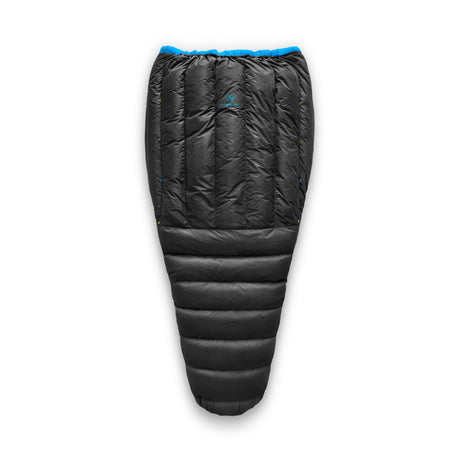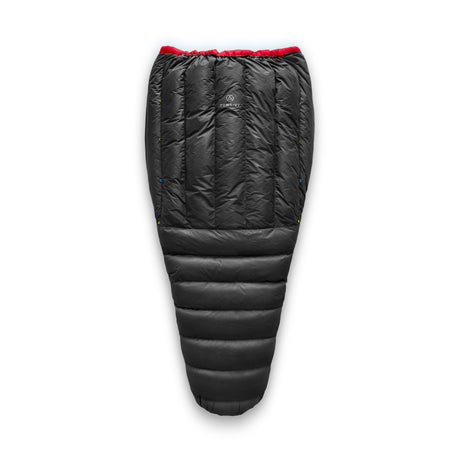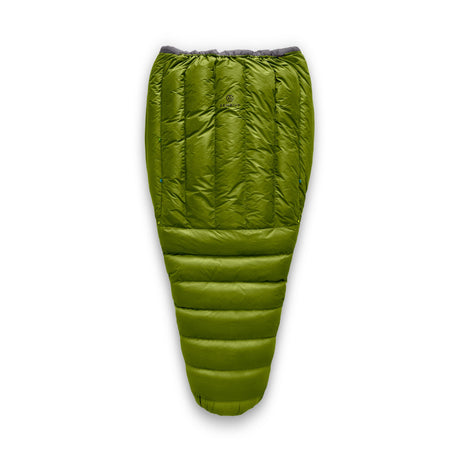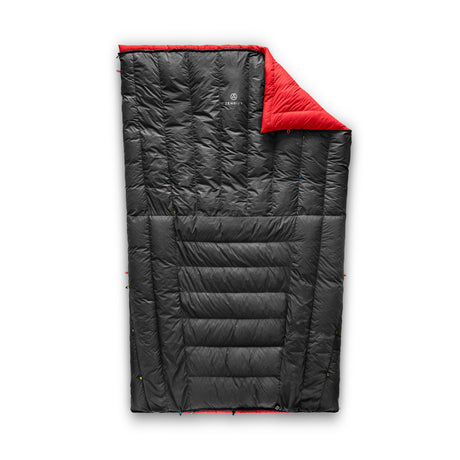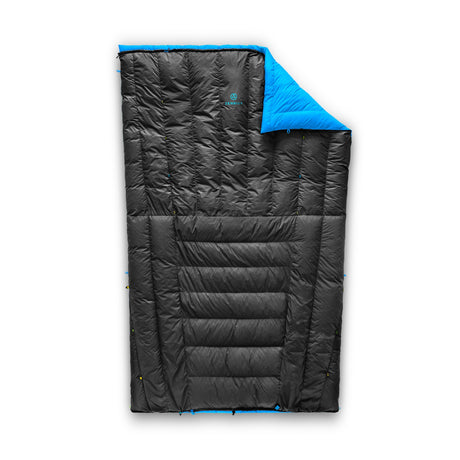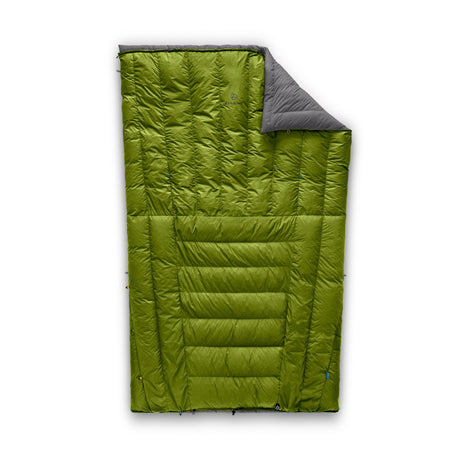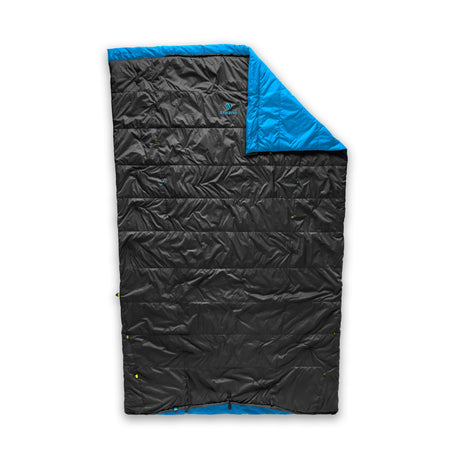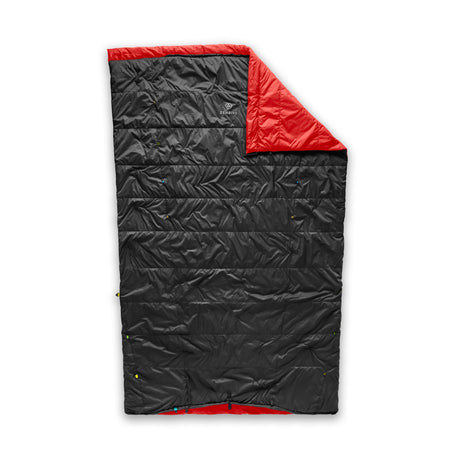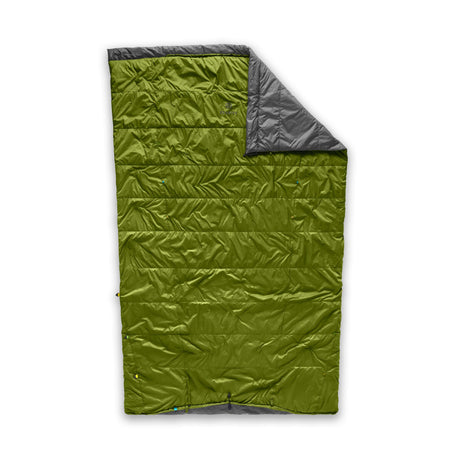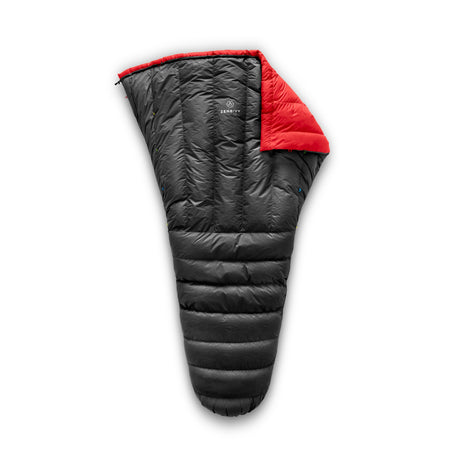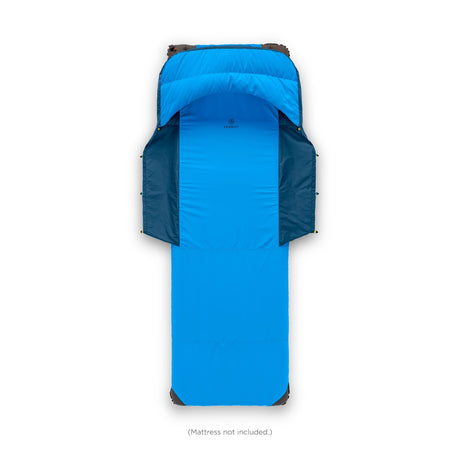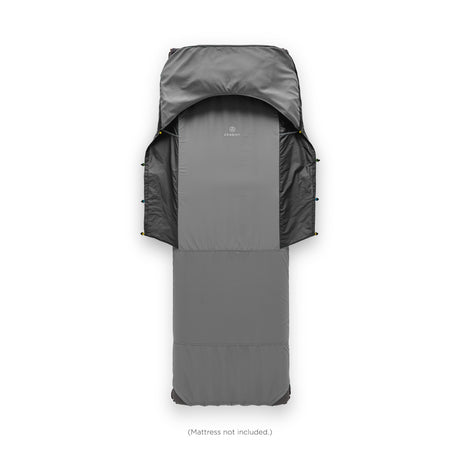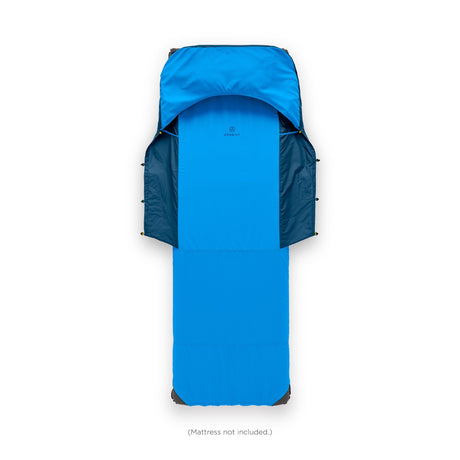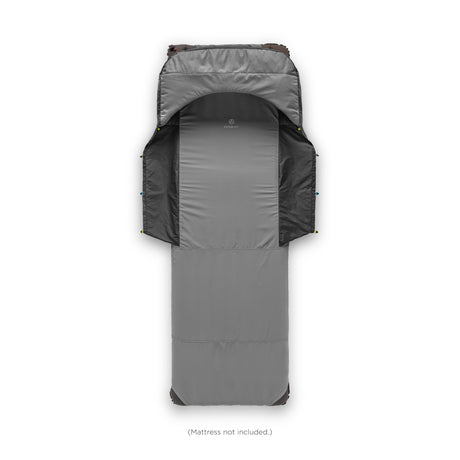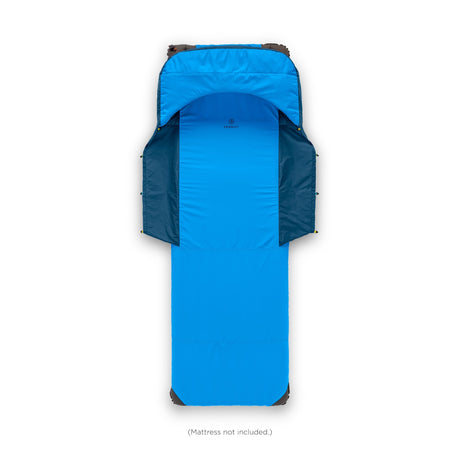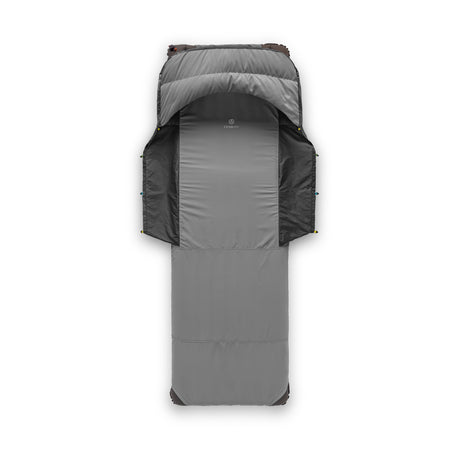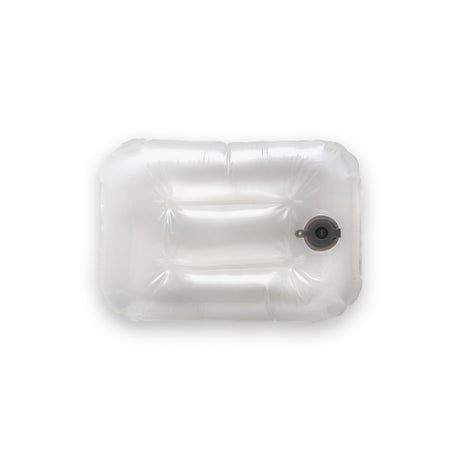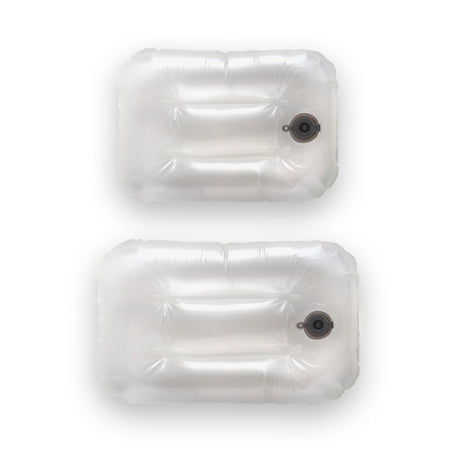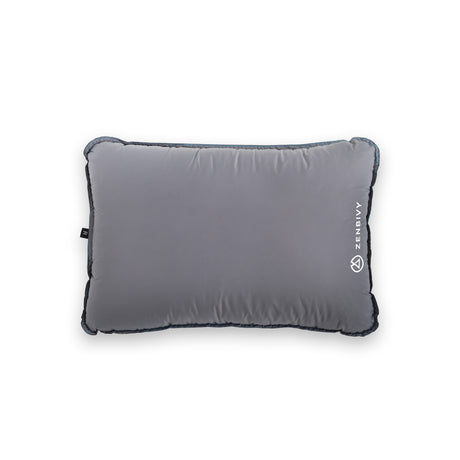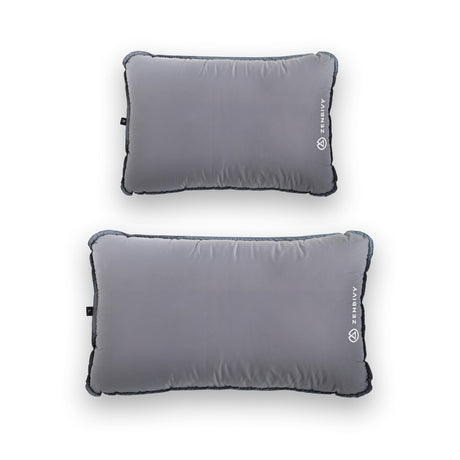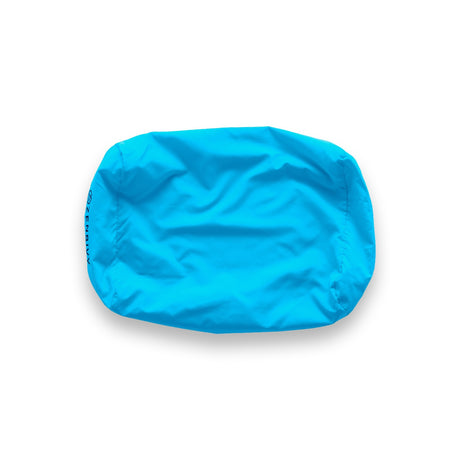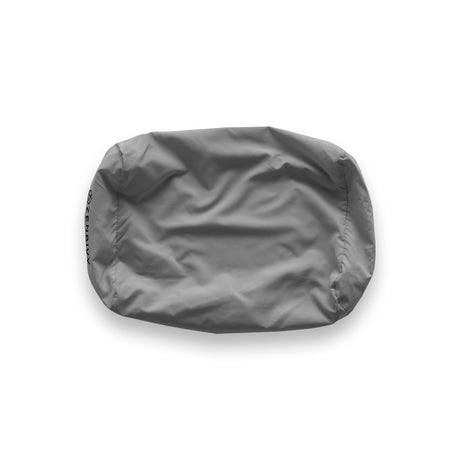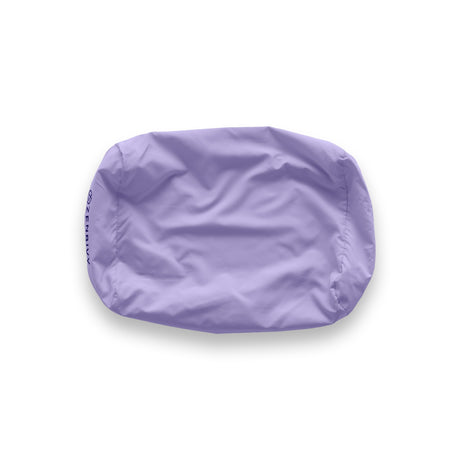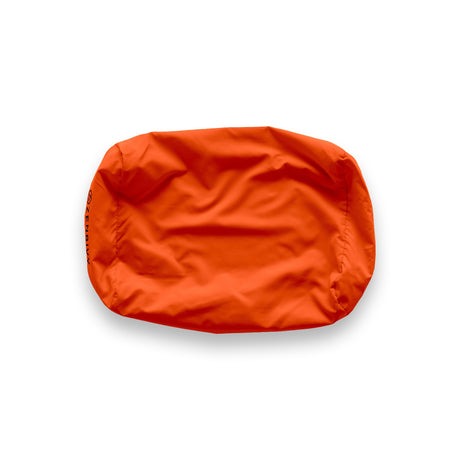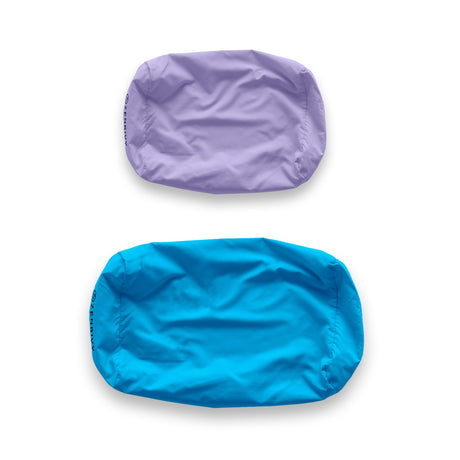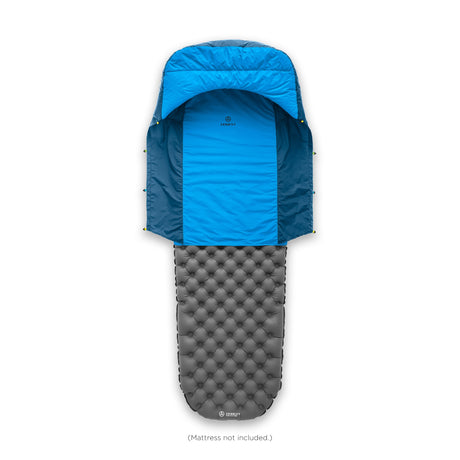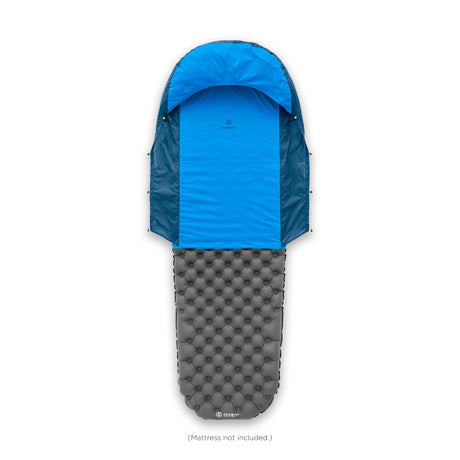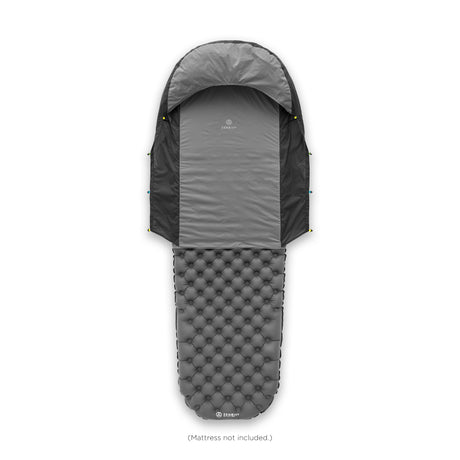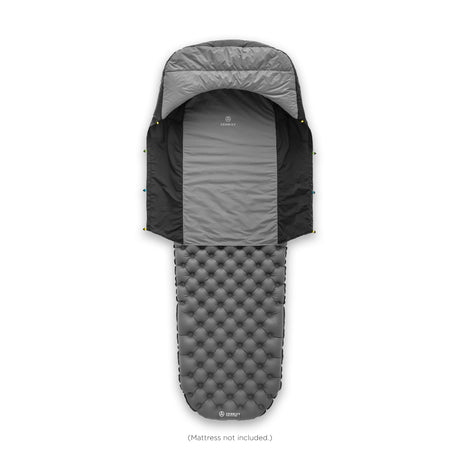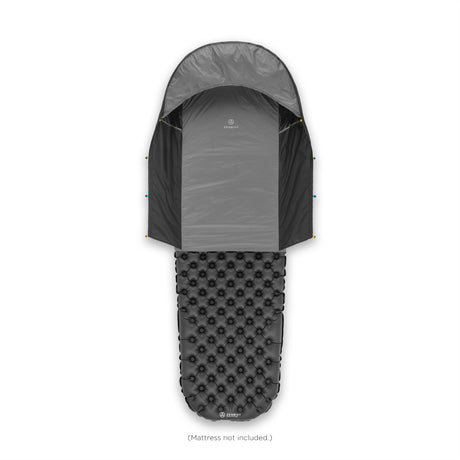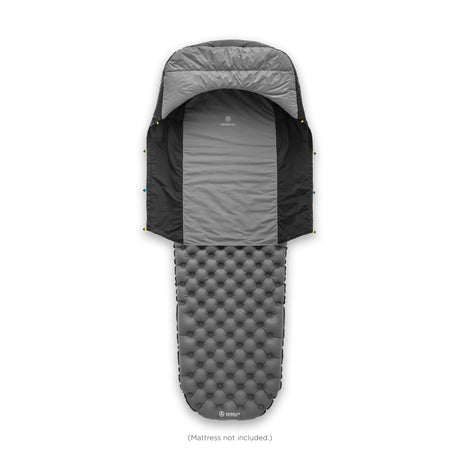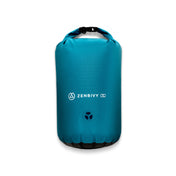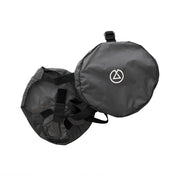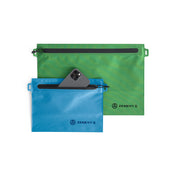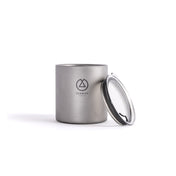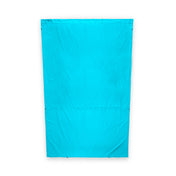Compression is hotly debated within the backpacking community. Do you need a compression sack or will a standard dry sack work? Are compression caps necessary? Does compression damage down? Let's get to it...
What are your options for compression?
Dry sacks typically do not have an air-release valve of any kind. This makes them a pain to try to "compress" at all as the air only has one escape route—right out the top, which is the part you're trying to roll down... A valve is what allows compression. Zenbivy Dry Sacks feature a high-speed mechanical valve that instantly dumps air while still remaining watertight.
Compression sacks consist of a way to release air (i.e. a valve) and some kind of strap system ("caps") to keep the bag compressed. Most compression sacks on the market have built-in caps, but all-in-one sewn compression sacks pull on seams and compromise the dry sack's waterproof integrity. Instead, we’ve made our Dry Sacks compression compatible. This not only allows you the option to choose whether or not you want to use the caps, but more importantly, separate compression will never stress seams, resulting in a more reliably waterproof dry sack. It's a win-win.
So what are compression caps and what purpose do they serve?
Generally speaking, compression caps are 2 "caps" that sit on the top and bottom of your dry sack and between them are 4 straps that can be tightened down. Whether they're separate or built-in, compression caps are designed to simply HOLD your already compressed dry sack at its smallest compressed size. With the caps, you only have to compress your sleeping bag once. Without them, the dry sack will start to take in air slowly over time and fill whatever space it's given in your pack. So, do you need them? More on that below...
 Photo credit: Mason Strehl
Photo credit: Mason Strehl
Our team's take on the topic...
Mason, Zenbivy’s marketing manager, is a fan of the Compression Caps because they do exactly what they’re designed to do—keep the sleeping bag packed as sleek and as small as possible. This allows for better organization and maximizes the already-limited space in your pack. To him, the extra couple ounces and the added effort it takes to strap on the Compression Caps to keep it that size is worth it. Fair enough!
On the other hand, Michael (Zenbivy’s founder) argues that the Compression Caps on our Dry Sack aren’t a necessity. He admits that without the caps you do have to re-compress your sleeping bag right before you put it in your pack (which can be done by simply kneeling on it to squeeze out any extra air), but by doing this, the compressed size is almost as small as it would be with the caps. You’re just eliminating all the fuss of having to strap the Compression Caps on and tighten them down each time you pack your sleeping bag.
Most importantly though, in Michael’s opinion, without the caps you are able to take the stuffed dry sack and kind of “mold” it into whatever shape you need it to be to fit perfectly with all the other gear in your pack. This is much easier than trying to work around (what’s more or less) a solid rock. Sure, without caps the compressed bag will slowly take on air and eventually fill any extra space in your pack, but who cares after it’s already in there, right? So Michael personally says no to the addition of the caps. He prefers his compression “au naturel”.
 Photo credit: Mason Strehl
Photo credit: Mason Strehl
Does compressing your sleeping bag damage the down?
Keeping insulation compressed over a long period of time is not great for the longevity of the down in your bag, it’s true, but compressing your sleeping bag between campsites while on a backpacking trip is very different than leaving it fully compressed in the back of your gear closet for months on end…
When you have it compressed in your pack on trips, you’re taking it out each time you get to camp and that allows the down both time and space to breath/re-fluff/expand, whatever you’d like to call it. So as long as you’re taking it out of its compression sack once you return home from your trip, it’ll be just fine.
What about car camping?
If you’re strictly a car camper that’s loading up your trunk and driving into the campground, there’s honestly no need for either our Dry Sack OR Compression Caps. Save yourself the hassle! All Zenbivy Beds and Light Beds come with a extra large mesh bag already. This bag is meant for long-term storage of your Zenbivy sleeping bag but it’s also perfect for transporting your Bed from home to car to campsite. So if you don’t ever plan to go backpacking with your Bed, you can skip the Dry Sack altogether and just stick with the included mesh bag for camping trips.
 Photo credit: Wade Goman
Photo credit: Wade Goman
To sum it up...
...as with most things, it's all personal preference. If you like to organize your pack in a specific way and find that Compression Caps help you do that, that's great! If you personally don't see a need for them, that's also great! At the end of the day, whatever works best for you and your packing style is the ideal way to compress your sleeping bag.

